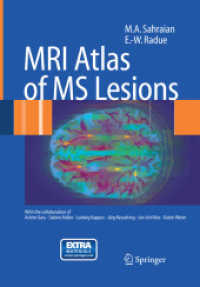- ホーム
- > 洋書
- > 英文書
- > Politics / International Relations
Full Description
This open access book develops a framework for advancing agroecology transformations focusing on power, politics and governance. Agroecology transformations represent a challenge to the power of corporations in controlling food system and a rejection of the industrial food systems that are at the root of many social and ecological ills.








